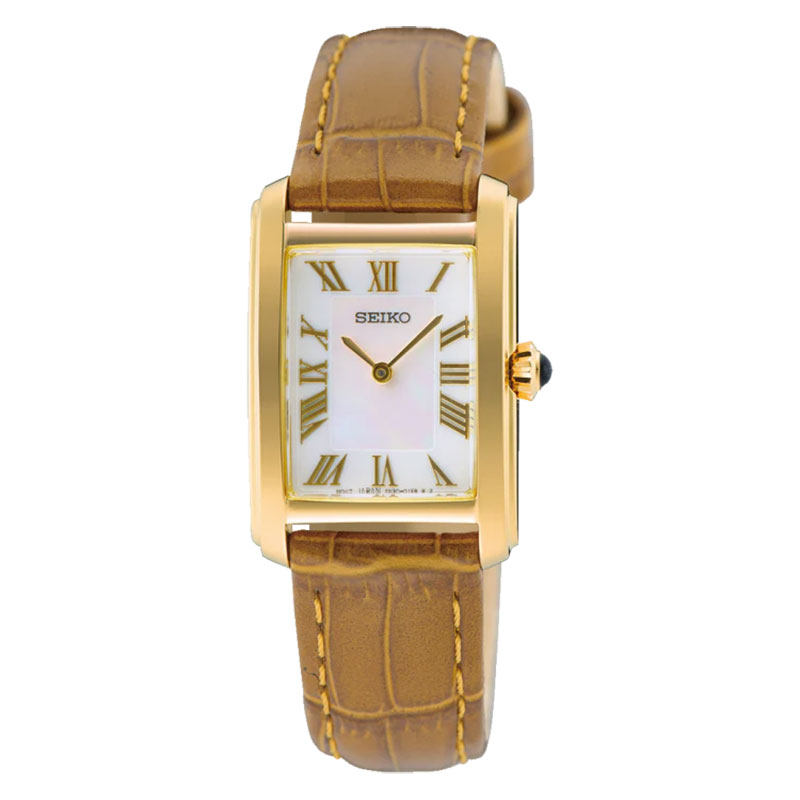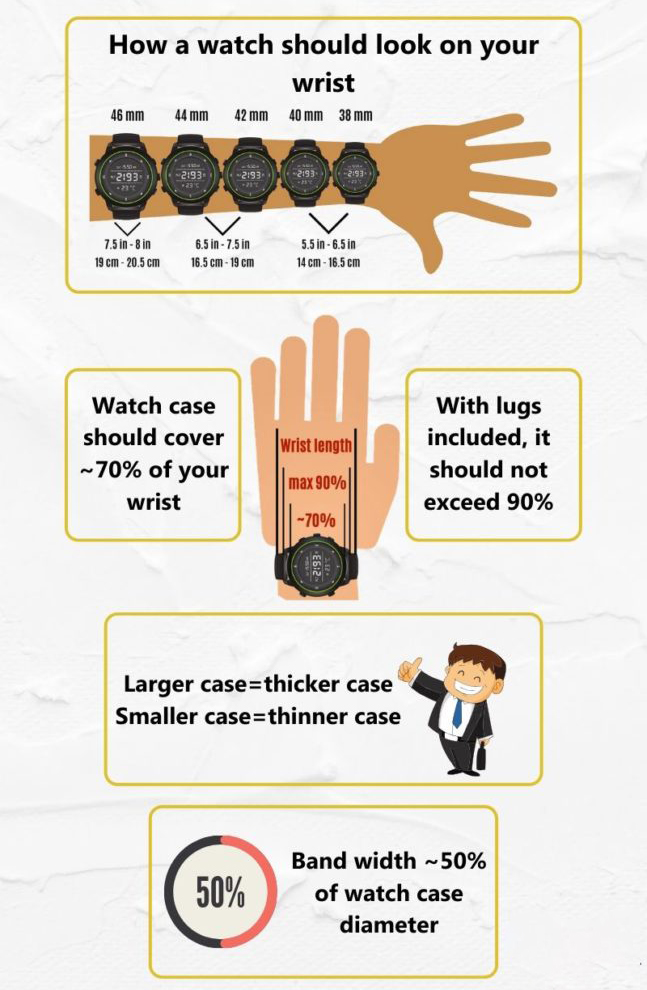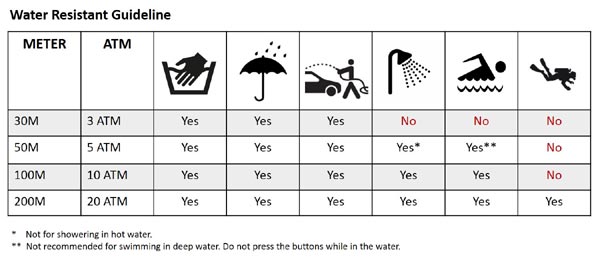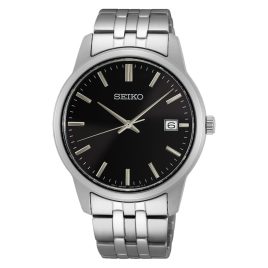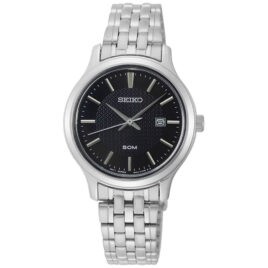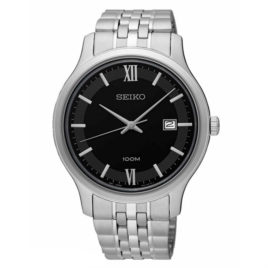Description
SEIKO QUARTZ Ladies SWR100 Specifications
| Feature |
| |||
|---|---|---|---|---|
| Driving system | Quartz | |||
| Caliber Number | 4N30 | |||
| Case material | Stainless steel | |||
| Case back | Solid | |||
| Band type | Strap | |||
| Band material | Calfskin leather | |||
| Band color | Light brown | |||
| Band width | 16 mm | |||
| Clasp | Buckle | |||
| Dial color | White | |||
| Glass material | Hardlex crystal | |||
| Hands | Gold tone hour, minute | |||
| Dial markers | Gold tone roman numerals | |||
| Bezel | Fixed gold tone stainless steel | |||
| Crown | Gold tone pull / push with blue cabochon at 3 o’clock position | |||
| Accuracy | ±15 seconds per month | |||
| Drive duration | Battery life approximately 3 years | |||
| Magnetic resistance | 4,800 A/m | |||
| Water resistance | 3 bar water resistance (30 meters / 100 feet) | |||
| Size | Diameter 22.2 mm x Thickness 7.8 mm | |||
| Lug to lug | 32.8 mm | |||
| Weight | 23 g |
SEIKO QUARTZ Ladies SWR100 Features
The Seiko Classic collection includes models designed and manufactured in the tradition of watchmaking. They are an expression of the successful combination of sophisticatedly designed cases and the advanced technology of their calibers. These timepieces do not require ostentatious luxury to be present and effective on the wrist; they are elegant yet affordable.
- Silver stainless steel case
- Light brown calfskin leather strap
- Gold tone stainless steel bezel
- Solid case back
SEIKO QUARTZ Ladies SWR100 History
The company was founded in 1881, when Kintarō Hattori opened a watch and jewelry shop called “K. Hattori” (服部時計店 Hattori Tokeiten) in the Ginza area of Tokyo, Japan. Eleven years later, in 1892, he began to produce clocks under the name Seikosha (精工舎 Seikōsha), meaning roughly “House of Exquisite Workmanship”. According to Seiko’s official company history, titled “A Journey In Time: The Remarkable Story of Seiko” (2003), Seiko is a Japanese word meaning “exquisite” or “success” (“exquisite” is usually written 精巧 from Chinese jīngqiǎo, while the meaning “success” is usually written 成功 from Chinese chénggōng).
The first watches produced under the Seiko brand appeared in 1924. In 1969, Seiko introduced the Astron, the world’s first production quartz watch; when it was introduced, it cost the same as a medium-sized car. Seiko later went on to introduce the first quartz chronograph.
In the late 1980s, Seiko produced the first automatic quartz that combined the self-energizing attributes of an automatic watch with quartz accuracy. The watch is entirely powered by its movement in everyday wear. In 1991, to increase popularity, these watches were relaunched under the name Seiko Kinetic.
source : https://en.wikipedia.org/wiki/Seiko

